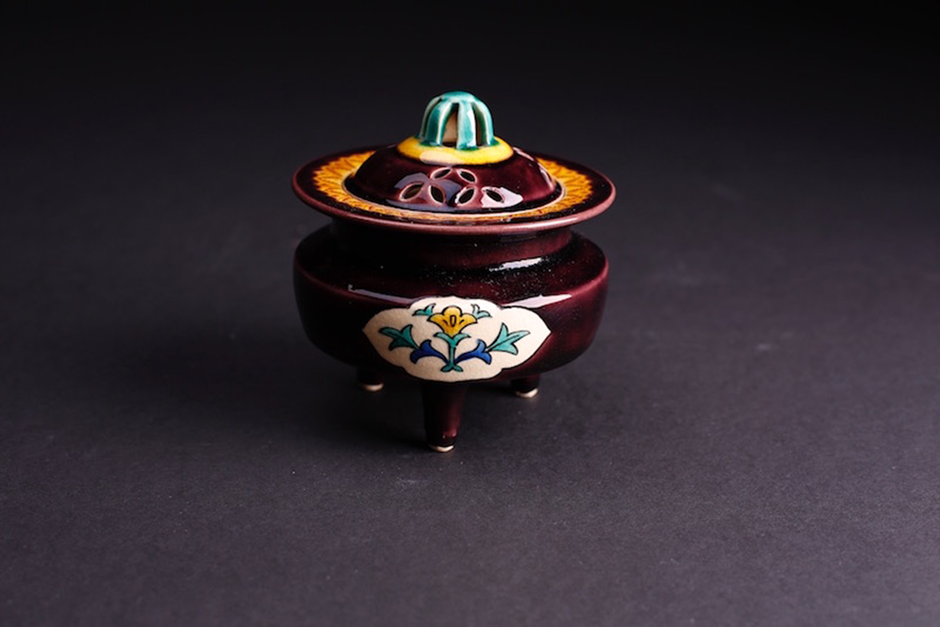
紫深厚釉 香炉 W10.0cm D10.0cm H10.4cm


紫深厚釉 香炉 W10.0cm D10.0cm H10.4cm
Tokuda YasokichiⅠ
Tokuda YasokichiⅠwas born in Komatsu, Nomi Ishikawa. With his father’s support, Yasokichi, who was talented in studying and painting, graduated from the higher course of an elementary school as the top student. After graduation, he worked at Akae workshop as a ceramic painter in the daytime and trained his painting skill under Kano school during the night.
In those days, Kutani-ware was the most exported ceramics in Japan, since it was the subject of the export promotion policy proceeded by the Meiji government. However, the quality of Kutani-ware made for the exportation was dreary compared to the Kutani-ware made by traditional methods. Sahira Matsumoto, a potter from Komatsu, was the one who reacted against the way Kutani-ware which has been inherited from ancient time was made only for trade profit and he aimed to revive it. Sahira revived a painting style with traditional blue-Kutani-ware paint color and he made a stir in the industry.
Turning to 17, Yasokichi applied to be an apprentice under Sahira learning Kutani-painting. Meeting old Kutani-ware and Aode-Kutani-ware, he decided to dedicate his life to revive the skill of old Kutani-ware which had been lost at the time. Then he got a qualification as a ceramic painter,” Touga-Kou” and he became independent at age 20.
Yasokichi, as a ceramic painter, had aimed to revive old Kutani-ware, revealing the secrets of the compound methods of colored glaze. (There is a sub-story : in “a black notebook” that he kept carrying and inherited to the third Tokuda, the compound methods of colored glaze which he made revived to this world were written in difficult codes. We could see his enthusiasm for the great research.) “Grape-patterned vase” which Shinkou-ware ―one of a result of the research― was used got the first prize in Arts and Crafts exhibition in Ishikawa. Acquiring the fame as the front person as a ceramic painter, Yasokichi had visited collectors of old Kutani-ware and Yoshidaya to replicate paints of many masterpieces. Going around and duplicating patterns and colorings of predecessors lead to his Japanese paint style later. His painting had been changed to the expression of carving his inner personality in artworks from the duplication.
One of his features is a sign. He was a pioneer who put his crafts name to his works in crafts world. His replicates were so close to real ones that they were trading in the market, so he put his sigh to make differences. However, his predecessors were forgotten in the history of Kutani-ware because they did not have signs. It became his pride to break the negative cycle by himself in his entire life.